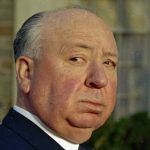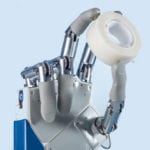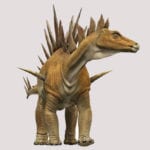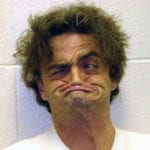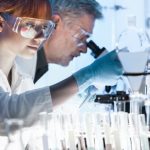 Our World
Our World  Our World
Our World  Weird Stuff
Weird Stuff 10 Cool and Creepy Facts about the Nottingham Caves
 Weird Stuff
Weird Stuff 10 Strange Things Found Inside Other Things
 The Arts
The Arts 10 Extremely Strange Designs of Common Musical Instruments
 Crime
Crime 10 Jaw-Dropping Prison Escapes Involving Helicopters
 Technology
Technology Using 10 Well-Known Technologies in the Most Unusual Ways
 Miscellaneous
Miscellaneous 10 Badly Damaged Trademarks That May Never Recover
 Books
Books 10 Famous Poisoned Pen Biographies
 History
History 10 of the Most Unusual Deaths Ever Recorded in History
 Humans
Humans 10 Amazing Origins of Human Body Parts
 Our World
Our World 10 Natural Phenomena That Challenge Our Understanding of Earth
 Weird Stuff
Weird Stuff 10 Cool and Creepy Facts about the Nottingham Caves
 Weird Stuff
Weird Stuff 10 Strange Things Found Inside Other Things
Who's Behind Listverse?

Jamie Frater
Head Editor
Jamie founded Listverse due to an insatiable desire to share fascinating, obscure, and bizarre facts. He has been a guest speaker on numerous national radio and television stations and is a five time published author.
More About Us The Arts
The Arts 10 Extremely Strange Designs of Common Musical Instruments
 Crime
Crime 10 Jaw-Dropping Prison Escapes Involving Helicopters
 Technology
Technology Using 10 Well-Known Technologies in the Most Unusual Ways
 Miscellaneous
Miscellaneous 10 Badly Damaged Trademarks That May Never Recover
 Books
Books 10 Famous Poisoned Pen Biographies
 History
History 10 of the Most Unusual Deaths Ever Recorded in History
 Humans
Humans 10 Amazing Origins of Human Body Parts
10 Clever Scientific References in Futurama
In honor of Futurama airing a new season at the end of this month, here are 10 of my favorite science and math references in the show… so far. Many of the writers on Futurama hold advanced degrees in physics, math, computer science, and other brainy fields. Together, they imbed jokes throughout the show that only amuse those with a strong understanding of very complicated subjects. Now you, too, can learn something new and get a chuckle out of the jokes you may not have caught before.
Related: Top 10 Funniest Cartoon Shows Ever
10 The Salmon Life Cycle
In Season 7 Episode 13, “Naturama,” the characters are featured in a three-part nature documentary called “Mutuals of Omicron’s Wild Universe.” Stepping away from the show’s penchant for mind-bending quantum physics, this episode explores ecological processes, including the salmon life cycle, tortoise mating rituals, and the social structures assumed by elephant seals. Although slightly less cerebral than other episodes of Futurama, had it not been for “Naturama,” I would have certainly failed my first biology quiz of the 6th grade.
“Part 1: The Salmon” begins in a cold freshwater stream as salmon eggs begin to hatch among the gravel. Although not discussed in full detail, the animation alleges the first two stages of a salmon’s life. The new hatchlings, known as alevins, are tiny fish connected to the yolk sac. Once they consume the yolk, they reemerge as juveniles, known as fry. Like all fry, Fry the character begins his journey from the river to the sea.
Soon, he meets and begins to court a beautiful fish named Leela, who promises herself to him when they are at the appropriate mating age. Following several underwater dates, Fry, Leela, and the rest of their generation reach the end of their maturation cycle and begin the return to their ancestral home. Unfortunately, nature tears Fry and Leela apart as they discover they’re from adjacent streams. Due to an act of heroism and a judgemental bear, the lovers are soon reunited. Leela lays her eggs, Fry fertilizes them, and the two die together.
As far as we know, salmon don’t fall in love and take each other on cute outings. In fact, the courting and spawning processes don’t begin until they have returned to their ancestral freshwater homes. However, despite some fictionalization, Futurama developed an accurate and entertaining portrayal of the salmon life cycle.[1]
9 Delta Brain Waves
In the episode “Roswell That End’s Well,” the Planet Express crew travels to 1947 New Mexico. Following a series of unfortunate events and poor judgment, Fry sleeps with his own grandmother, thus becoming his own grandfather. This resulted in having a unique brain pattern without any delta brainwaves. On several occasions, Fry’s lack of delta brainwaves allows him to resist multiple evil, mind-hacking powers.
For example, the episode “Into the Wild Green Yonder” introduces the “Dark Ones,” a mind-reading species intent on taking over the universe. Because he doesn’t have a delta brainwave, Fry is immune to the Dark Ones, which allows him to keep his thoughts private and save the universe without detection.
On a side note, before doing research for this list, I assumed that the delta brainwave was another of Futurama’s inventions to drive the story forward and add depth to Fry’s character. In reality, the delta brainwave is very real, albeit poorly understood.
The slowest recorded brainwave in humans, the delta wave contributes to deep levels of relaxation and restorative sleep. Delta waves are associated with subconsciousness, making them a reasonably good target for brain hackers. Additionally, scientists have found a negative correlation between delta wave measures and spiritual intelligence, which might suggest that Fry would be highly spiritually intelligent and able to resist the peculiar dark forces throughout the universe.[2]
8 BASIC
BASIC is a computer programming language designed for beginners or, as the name suggests, basics. Invented in 1964 by John G. Kemeny and Thomas E. Kurtz, BASIC was one of the first of its kind. As referenced in the episode “I, Robot,” the coding language is technologically relevant over 1,000 years into the future. When moving in with Bender, Fry passes a sign that reads “10 HOME, 20 SWEET, 30 GO TO 10″—”Home Sweet Home” for those of you unfamiliar with BASIC.[3]
7 The Birth of Our Universe
Season 6 Episode 7, “The Late Phillip J Fry,” posits one of the series’ most fascinating theories on time and its cyclical nature and teaches its audience several great lessons on the creation of our universe. While rushing to meet Leela for dinner, Fry is persuaded by Professor Farnsworth to help test out his newest invention, a forward time machine. Joined by Bender, the two men enter the machine and anticipate to travel one minute into the future. Unfortunately, the professor trips and sends the machine hurtling through spacetime.
When the professor finally manages to stop the machine, the trio discovers that they have landed in the year AD 10,000. They decide to continue traveling further into the future and watch as the universe transforms into nothingness. Amazingly, this supposed end sets off an enormous explosion Farnsworth identifies as the Big Bang. The Big Bang Theory states that the universe was contained in an infinitely hot and dense point that instantaneously expanded at incredible speeds. Having witnessed the leading theory on the birth of our universe, Farnsworth concludes that they must be in a universe identical to its predecessor, and by continuing forward in time, the men (and one robot) should be able to return to their lives in New New York.
The animation sequence of the genesis of our universe is as beautiful as it is informative. Farnsworth, Fry, and Bender go on to watch as gravity pulls matter together into the first stars and galaxies, Earth emerges out of swirling dust and gas, and a giant collision out of which the moon was formed. This collision, known as the “moon-forming impact,” vaporized some of the rock and metal from Earth and the colliding object, eventually forming our moon. They attend early evolution, the arrival of the first colonizers, and other major events in natural and human history until ultimately returning home.[4]
6 The Problem of Relativity
Futurama characters routinely travel faster than the speed of light to quickly get around intergalactic space, a plot-advancing device that contradicts natural laws of physics. This scientific fallacy isn’t an oversight but rather the result of a decision made early on by the executive producers David Cohen and Matt Groening to prioritize entertainment over science.
In an interview with the American Physical Society, Cohen explains how he and the other writers attempt to bend the rules in a way “that will amuse scientists, even if it is bogus.” The writers acknowledge the bogusness of traveling faster than the speed of light with a scene featuring Professor Farnsworth and his clone, Cubert, in the episode “A Clone of My Own.” While showing Cubert his inventions, Farnsworth explains how his “dark-matter engines… travel between galaxies in mere hours.” Cubert points out that that’s impossible because one can’t travel faster than the speed of light. The professor explains that this isn’t a problem because “scientists increased the speed of light in 2208.”
According to Einstein’s special relativity equation, E=mc2, where c is the speed of light, an object approaching the speed of light becomes of infinitely large mass. As a result, the amount of energy required to move the object becomes infinitely great, thus making it impossible for anything to surpass the speed of light. Rather than introducing technology that is capable of exerting infinite amounts of energy, the writers of Futurama avoided the problem of relativity by simply raising the speed of light such that objects can move at incredible speeds without approaching the limit c.[5]
5 Heisenberg’s Uncertainty Principle
Professor Farnsworth references the Observer Effect after a disappointing loss at the race track in Season 3 Episode 4, “Luck of the Fryrish.” In 1927, German physicist and Nobel laureate Werner Heisenberg claimed that we cannot precisely calculate a particle’s speed and location at the same time. Due to its wave-like nature, a particle does not exist in a precise location but over a range of positions. In order to perfectly measure a wave’s position, one would have to collapse it onto a single point with an indefinite wavelength and indefinite speed.
Similarly, a particle contains groups of waves that make up a range of momentum, such that a wave with perfectly measurable momentum oscillates infinitely throughout space and has an indefinite position. The Uncertainty Principle is not a result of measurement but of an inherent property of quantum particles. However, the semiclassic description of the principle reveals consequences in quantum mechanical measurement. For instance, researchers must fire photons at an electron to determine its position. These small photons carry and impart their own momentum onto the electron, thus intrinsically changing the system.
Farnsworth bet on a race ending in a dead heat, or a tie, between two horses. To Farnsworth’s dismay, the judges use an electron microscope to determine the quantum winner, to which the old professor protests, “No fair! You changed the outcome by measuring it.” This one-liner refers not only to Farnsworth’s disappointment in being demoted to loser status but also to an important consequence revealed by the Uncertainty Principle. Because the Uncertainty Principle is an inherent property of quantum particles, this problem cannot be avoided using more sophisticated measurement techniques. Thus, measuring one quantum variable intrinsically changes the system.[6]
4 Schrodinger’s Cat
One evening in 1935, while discussing the modern understanding of quantum mechanics with Albert Einstein, Erwin Schrodinger devised one of physic’s most well-known thought experiments. The two physicists were grappling with the quantum rule that, as a consequence of its wave-like properties, any given quantum object exists in a state of superposition.
Schrodinger’s cat illustrates this concept through a hypothetical cat sealed in a box. Suppose the box contains some radioactive substance with a 50/50 chance of decaying. If it decays, it will release a vial of poison, killing the cat. You have no way of knowing whether or not the cat is still alive without opening the box, such that the cat is simultaneously dead and alive until you check on the poor guy.
Season 6, Episode 16, “Law and Oracle,” features a reckless Erwin Schrodinger speeding away from the newly appointed NNYPD officer Fry and his partner URL. Eventually, the officers capture the physicist and ask about the contents of the mysterious box in the car. Schrodinger claims in a heavy German accent that it has “a cat, some poison, und a cesium atom.” Fry demands to know whether or not the cat is dead, to which Schrodinger responds, “It’s a superposition of both states until you open it and collapse the wave function.” Doubtful, Fry opens the box and is attacked by the cat, confirming that it is alive.[7]
3 Möbius Strip
Did your high school math teacher ever hand out narrow strips of paper and tell you to give it a half-twist and tape its ends to each other? If so, congratulations, you have made one of math’s most artistic discoveries, the Möbius strip. The Möbius strip is a non-orientable surface in which you cannot distinguish clockwise and counter-clockwise turns. It is a single-sided, 2-dimensional object that has snuck its way into our 3-dimensional world. If you were to trace your finger along the entirety, you would not have to lift a finger or cross a single boundary.
The episode “Möbius Dick” (6ACV15) is the first of Futurama’s Möbius strip puns. When flying through the Bermuda Tetrahedron, the Planet Express crew is attacked by a four-dimensional space whale that Leela calls Möbius Dick. This pun is a cheeky reference to the Herman Melville novel and, given that you can smoothly embed a Möbius strip into four-dimensional space, an apt description of a four-dimensional space whale.
The second reference to the abstract surface appears in the episode “2-D Blacktop” (7ACV15) when Leela and Professor Farnsworth race along the Möbius Dragstrip. As they begin their journey “once around both same sides of the half twist, and back to the start and the finish line,” their vehicles collide at relativistic speed, and they are transported into a 2-dimensional universe. Don’t worry; they eventually make a safe return to the third dimension.[8]
2 The Banark-Tarski Paradox
The episode “Benderama” introduces Professor Farnsworth’s newest invention, the “Banach-Tarski Dupla-Shrinker.” The Banach-Tarski paradox of infinite cloning proves that, though counterintuitive, it is mathematically possible to split a three-dimensional ball into pieces and reassemble those pieces into two identical copies of the original. Additionally, a sphere can be reassembled into another sphere of any size. The logic behind this paradox boils down to manipulating countably infinite sets and uncountably infinite sets, the precise mathematics of which I will not bore you with now. However, I encourage you to read the QuantaMagazine article on this topic if you’re itching to learn more.
Farnsworth, an aging and shrinking old man, developed something that could create smaller duplicates of his sweaters, which he tasked Bender to fold. Avoiding this chore, Bender installs the machine into his chest cavity and creates two more of himself at 60% to do his bidding. These Bender-clones eventually each create two smaller versions of themselves, who create two smaller versions of themselves, and so on, until infinitely many Benders have infested the world. At the end of the episode, they all help the original Bender defeat a giant by forming one huge Bender. Although the Banark-Tarski Dupla-Shrinker doesn’t completely conform to its mathematics, the episode makes several clever references to the paradox.[9]
1 The Futurama Theorem
The episode “The Prisoner of Benda” (7ACV10) was written by Ken Keeler, who has a Ph.D. in applied mathematics from Harvard University. For this episode, Keeler developed the only mathematical proof written solely for a television show. “The Futurama Theorem” states that any permutation (or arbitrary mess) of n objects can be restored through a sequence of non-repeating swaps using no more than two additional objects. In “Prisoner of Benda,” the theorem is developed by Bubblegum, Sweet Clyde, and Express of the Harlem Globetrotters in order to solve a mess created by Professor Farnsworth, Amy, and their “Mind-Switcher” device.
After testing out the device on themselves and having fun experiencing life as each other for a bit, Farnsworth and Amy decide to switch back to normal. Not much later, they realize that the machine will not allow the same pair of bodies to sit in the machine more than once. “Oh, no! Is it possible to get everyone back to normal using four or more bodies?” The mayhem continues as more people (and wash buckets) get involved in the shuffle.
However, thanks to “The Futurama Theorem,” everyone’s minds are restored to their rightful bodies by the end of the episode. I notated a demonstration of a simplified version of the mind-switching shenanigans in the episode based on sequences of the theorem as laid out by Cheryl Grood with the Philadelphia Math Teacher’s Circle. Bubblegum and Sweet Clyde act as the additional help required by the theorem.[10]
Split everyone into groups based on who needs to end up in what body. Put these groups in an ordered line, with each person facing the body they need to end up in.
Group 1: Professor(Leela) → L(Hermes) → H(Amy) → A(Washbucket) → W(Emperor Nikolai) → EN(Bender) → B(P)
Group 2: Zoidberg in Fry’s body (F(Z)) and Fry in Zoidberg’s body (Z(F))
Swap the mind of the person at the front of any line with the first helper (Sweet Clyde). Then, have the second helper (Bubblegum) switch with everybody else, starting from the back and working forward.
Group 1:
B(P) ↔ SC(SC) = B(SC) & SC(P)
BG(BG) ↔ P(L) = BG(L) & P(BG)
BG(L) ↔ L(H) = L(L)!
BG(H) ↔ H(A) = H(H)!
BG(A) ↔ A(W) = A(A)!
BG(W) ↔ W(EN) = W(W)!
BG(EN) ↔ EN(B) = EN (EN)
BG(B) ↔ B(SC) = BG(SC) & B(B)!
BG(SC) ↔ P(BG) = BG(BG)! & P(SC)
P(SC) ↔ SC(P) = P(P) & SC(SC)!
Group 2:
SC(Z) and F(SC)
BG(BG) ↔Z**(F) = BG(F) & Z(BG)
SC(Z) ↔Z(BG) = Z(Z)!
BG(F) ↔ F(SC) = F(F)!
BG(SC) ↔ SC(BG) = SC(SC)! & BG(BG)!
